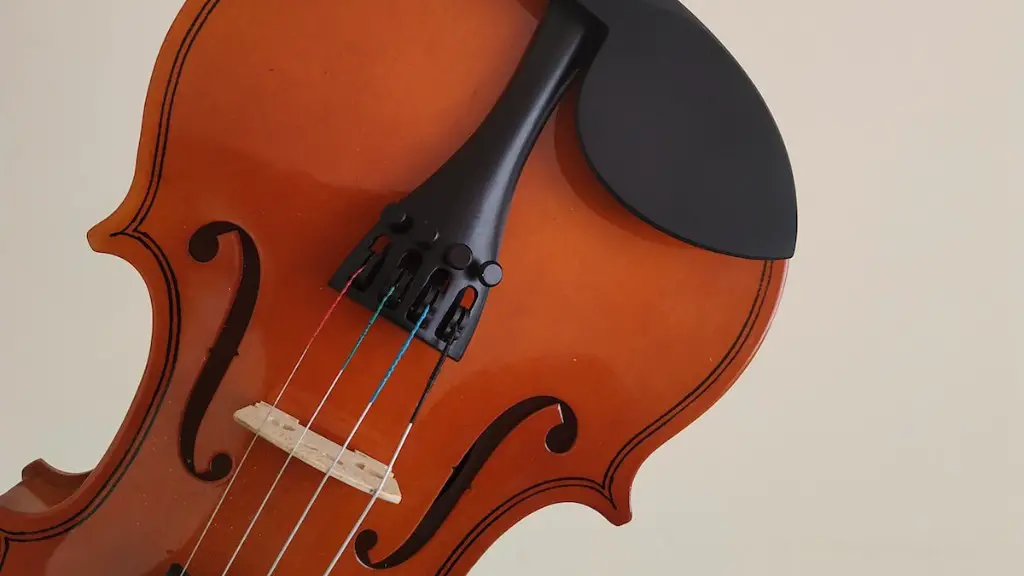Converting an acoustic guitar to sound electric doesn’t have to be complicated or expensive. With some basic tools and know-how, you can make your own acoustic electric guitar.
The first step is to select the right hardware and accessories. You will need a pickup system, an amplifier, and a few other items such as cables and strings. Pickup systems come in many varieties, so it is important to research which one best suits your needs.
Next, install the pickup system onto the guitar. This can be done using a few simple tools such as screwdrivers and wire cutters. It is important to make sure that all wires are properly connected and that the pickup is securely attached. Once the pickup is in place, you can connect it to the amp.
Finally, plug in your newly converted acoustic electric guitar and test it out! Experiment with different sounds until you achieve the desired tone. With a bit of practice and patience, you can create an instrument that sounds like it was made for the stage!
Choosing an Electric Guitar Amplifier
When it comes to making an acoustic guitar sound electric, the right amplifier is essential. An electric guitar amplifier can provide the power and volume needed to bring out the best of the instrument and make it stand out in a mix. With so many models available, choosing one can be overwhelming.
The first step is to determine what type of music you want to play. Different styles of music require different amplifiers and effects. For example, jazz requires a clean, warm tone while metal requires a lot of distortion and gain. Once you have an idea of what type of sound you’re looking for, it’s time to narrow down your options.
Next, consider your budget and the features you need in an amplifier. Generally speaking, more expensive amplifiers have more features such as FX loops and onboard effects like chorus or reverb. You should also consider how loud you need your amp to be; certain genres require higher volume than others.
When shopping for an electric guitar amplifier, try before you buy if possible. There’s nothing quite like hearing how a model sounds in person, so don’t be afraid to try different models until you find the perfect one for your needs. With so many options available today, finding the right amp doesn’t have to be difficult.
Installing Effects Pedals
If you want to make your acoustic guitar sound electric, one of the best ways to do so is by installing effects pedals. Effects pedals are devices that help modify the sound of your guitar by adding various effects such as distortion, echo, reverb, and more. To install effects pedals, you will need a few tools such as a screwdriver set, soldering iron, and wire cutters. You will also need to know how to make basic electrical connections. It is best to consult a guitar technician or expert before attempting any modifications yourself.
Once you have all the necessary tools and knowledge, you can get started with installing your effects pedals. The first step is to locate where you would like the effect pedal installed on the guitar body. Some guitars have pre-drilled holes for mounting the pedal while others may require drilling new holes. Then attach the pedal securely with screws and connect it to your amplifier with an audio cable.
Finally, use a soldering iron to connect the wires from the pedal’s control knobs and switches. Once everything has been connected properly and securely, turn on your amplifier and start experimenting with different settings! With some practice and patience you will soon be able to create amazing sounds with your electric-sounding acoustic guitar!
Utilizing an Audio Interface
Acoustic guitar can be used to create a wide range of sounds, from a mellow tone to a full-bodied electric sound. To achieve the latter, you need to use an audio interface. An audio interface is a device that allows you to connect your guitar to your computer and record digital audio. It also enables you to plug in effects pedals and other external devices.
Once your guitar is connected, you’ll need a software program such as Pro Tools or Logic Pro X to record and edit your sound. You can then add effects such as reverb or distortion, or use amp modeling plugins to create the perfect electric sound. With some practice and experimentation, you’ll be able to create an amazing sounding electric guitar track with ease.
Once you’ve recorded your track, you can mix it down in the DAW (digital audio workstation) software and make adjustments such as EQ or compression. This will give you a great sounding electric guitar tone that will be suitable for any mix or recording.
Using an audio interface is an easy way to make your acoustic guitar sound electric. With the right tools and knowledge, it’s relatively simple to get amazing results in no time.
Exploring Different String Gauges
Guitarists have the option to customize the sound of their instrument with different string gauges. The gauge of a string is measured by its thickness and can range from extra-light to extra-heavy. Each gauge offers a unique playing feel and sound, so it is important to choose the right one for your style and desired tone. For instance, lighter strings are better for fast, intricate solos and strumming, while heavier strings are better for creating a full-bodied sound with more sustain.
If you’re looking to make an acoustic guitar sound electric, try using heavier strings. Heavier strings create more tension, which results in more volume and sustain. Additionally, thicker strings are less likely to break or go out of tune as easily as thinner ones. For this reason, many acoustic players use heavier gauge strings on stage or in the studio.
No matter what type of guitar you play or what type of music you’re into, experimenting with different string gauges can help you achieve the perfect tone you’re looking for!
Selecting the Right Pickups for Your Acoustic Guitar
Choosing the right pickups for your acoustic guitar can be a daunting task. To make your acoustic sound electric, you need to choose pickups that accurately capture the unique tones of your instrument. There are a variety of pickups available, so it is important to consider the type of sound you want to achieve and the style of playing you prefer.
Single-coil pickups are ideal for creating a bright, crisp tone with plenty of high-end definition. If you’re looking for more warmth, consider humbucking pickups, which will produce a thicker, fuller sound with less feedback. You may also want to consider active pickups if you’re looking for a higher output signal or more tonal control.
No matter what kind of sound you’re aiming for, it’s important to test out various pickup models to find the one that best suits your needs. When testing out different pickup models, pay close attention to their sensitivity and dynamic range so that you can determine which one works best with your playing style and instrument. With the right combination of pickups and playing style, you’ll be able to create an amazing electric tone from your acoustic guitar!
Tuning and Intonation Adjustment
Getting an acoustic guitar to sound like an electric guitar is no easy feat. But with the right tuning and intonation adjustments, you can get your acoustic guitar to sound great.
The first step is to make sure your guitar is in tune. Check each string and adjust the tuning pegs until the strings are all in tune. If you’re having difficulty getting the strings to stay in tune, you may need to replace them.
Next, adjust the intonation of your guitar. This is done by adjusting the bridge saddles, which should be set so that each string is in tune at both the nut and bridge of your guitar neck. To check if your intonation is correct, play a note on one string at both the nut and bridge and compare how they sound – they should be in tune with each other.
Finally, use a pickup system or microphone to amplify your acoustic guitar’s sound. This will help bring out any subtle nuances that may have been lost when playing acoustically, giving it an electric-like tone.
With some patience, you can make your acoustic guitar sound like an electric. With regular tuning and intonation adjustments, you’ll be able to keep it sounding great for years to come!
To Sum It All Up
Overall, making an acoustic guitar sound electric is quite achievable. With the right tools, you can easily convert your acoustic guitar into an electric one. First, you need to attach a pickup to your guitar, which will capture the sound of the strings. Then, you should connect it to an amplifier so that the sound can be amplified and heard more clearly. Finally, adjust the tone and volume controls to get the desired sound. By following these steps, you can make your acoustic guitar sound like an electric one in just a few minutes.
The process of making an acoustic guitar sound electric is fairly straightforward and can be done by anyone with some basic knowledge of electronics. With the right equipment and a little bit of patience, you can easily make your acoustic guitar sound like an electric one in no time at all.





